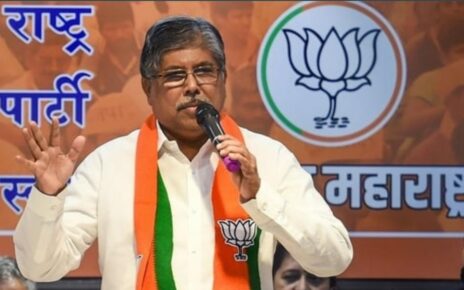US President Joe Biden’s outreach to the Indian Prime Minister Narendra Modi by stepping out to greet him at the G7 summit in Germany is being perceived as a calculated political move to garner his support on the Quad and other multilateral issues on the table.TV grabs and pictures of the event have gone viral especially in India and on the internet raising curiosity as to why would Biden do such a thing unless there was an agenda behind it, sources not wishing to be named said.
The US needs India’s support on the Russia Ukraine war where India has maintained a low-profile ambivalent stand in the Quad group with India’s External Affairs Ministry not making any statement that could reportedly upset the balance in the long traditional ties India has had with Russia over the years and with multibillion dollar military supplies at stake, even though the BJP-led NDA has come off to the world as an ultra-right wing party aligned more with the west than the east, analysts feel.While Biden might persuade India to restrict oil imports from Russia and look at the global demand supply management in several countries, including India where inflation is soaring, India would reiterate its position that it is unfairly being targeted for its imports from Russia on oil while most of the west looks to Russia for energy supplies and imports minerals, fertilisers and ores. The US understands fully that the Indian diaspora is one of the largest in the ethnic communities settled in the US numbering over one million contributing as much $2 billion in taxes to the IRS and US treasury annually. Highly-educated Indians dominate the IT space in the US, especially Silicon Valley where many Indian Americans lead global companies such as Google, Microsoft, and lots of other mid-level IT companies or startups. It is only rivalled by China which has a language barrier in English which India does not have. What’s possible on the agenda between the two leaders of the two great democracies of the world if and when they meet. The US might make another futile bid to get Indian support on the Russia Ukraine war, strengthen US in its position on the South China seas to protect its allies, the Philippines and Vietnam, where India too has interests, particularly Vietnam where state owned ONGC is drilling for oil. It could be mutual where India would yield less space given its historic stands on multilateral issues.
The US needs India’s support on the Russia Ukraine war where India has maintained a low-profile ambivalent stand in the Quad group with India’s External Affairs Ministry not making any statement that could reportedly upset the balance in the long traditional ties India has had with Russia over the years and with multibillion dollar military supplies at stake, even though the BJP-led NDA has come off to the world as an ultra-right wing party aligned more with the west than the east, analysts feel.
While Biden might persuade India to restrict oil imports from Russia and look at the global demand supply management in several countries, including India where inflation is soaring, India would reiterate its position that it is unfairly being targeted for its imports from Russia on oil while most of the west looks to Russia for energy supplies and imports minerals, fertilisers and ores.
What’s possible on the agenda between the two leaders of the two great democracies of the world if and when they meet. The US might make another futile bid to get Indian support on the Russia Ukraine war, strengthen US in its position on the South China seas to protect its allies, the Philippines and Vietnam, where India too has interests, particularly Vietnam where state owned ONGC is drilling for oil. It could be mutual where India would yield less space given its historic stands on multilateral issues.
The Biden administration has made very clear statements in its election manifesto of supporting the Indian community on several issues considering the diaspora’s contribution to American prosperity. Indian IT companies had a tough time with the Trump administration when it sought to curtail the number of H1B1 visas issued to Indian techies, insisting on giving more space in employing local Americans.On the average, a low-level or mid-level Indian techie in the IT space would be earning around $50,000 to 70,000 a year. But to employ an American, both American and Indian IT companies would have to pay a minimum wage of $100,000 a year.That’s the reason why most US and Indian IT companies preferred to outsource or employ equally competent if not more Indians in large numbers with companies such as TCS, Infosys and Wipro and HCL enjoying the benefit of bulk visa issues from US immigration office which Trump sought to strike down.



